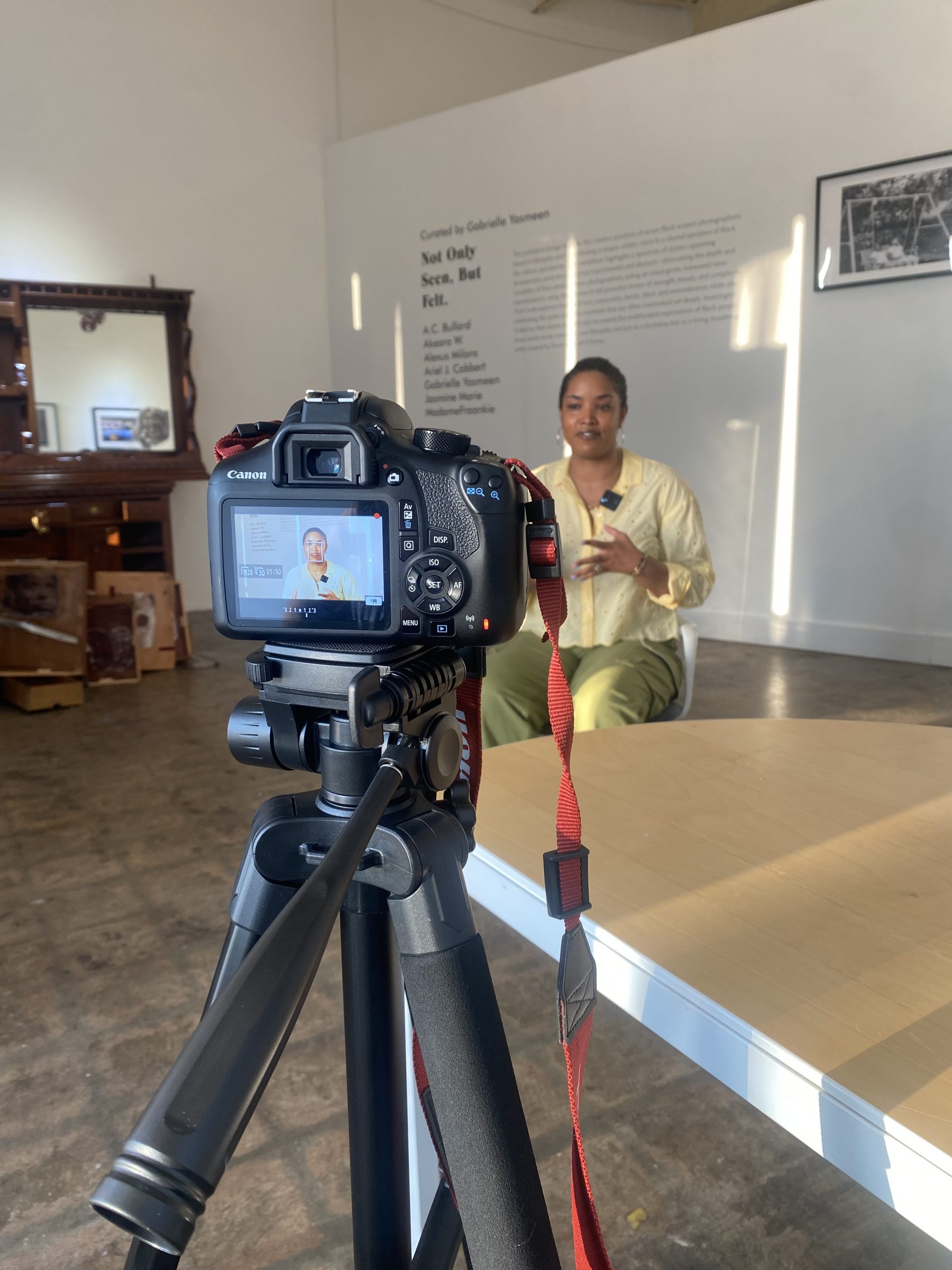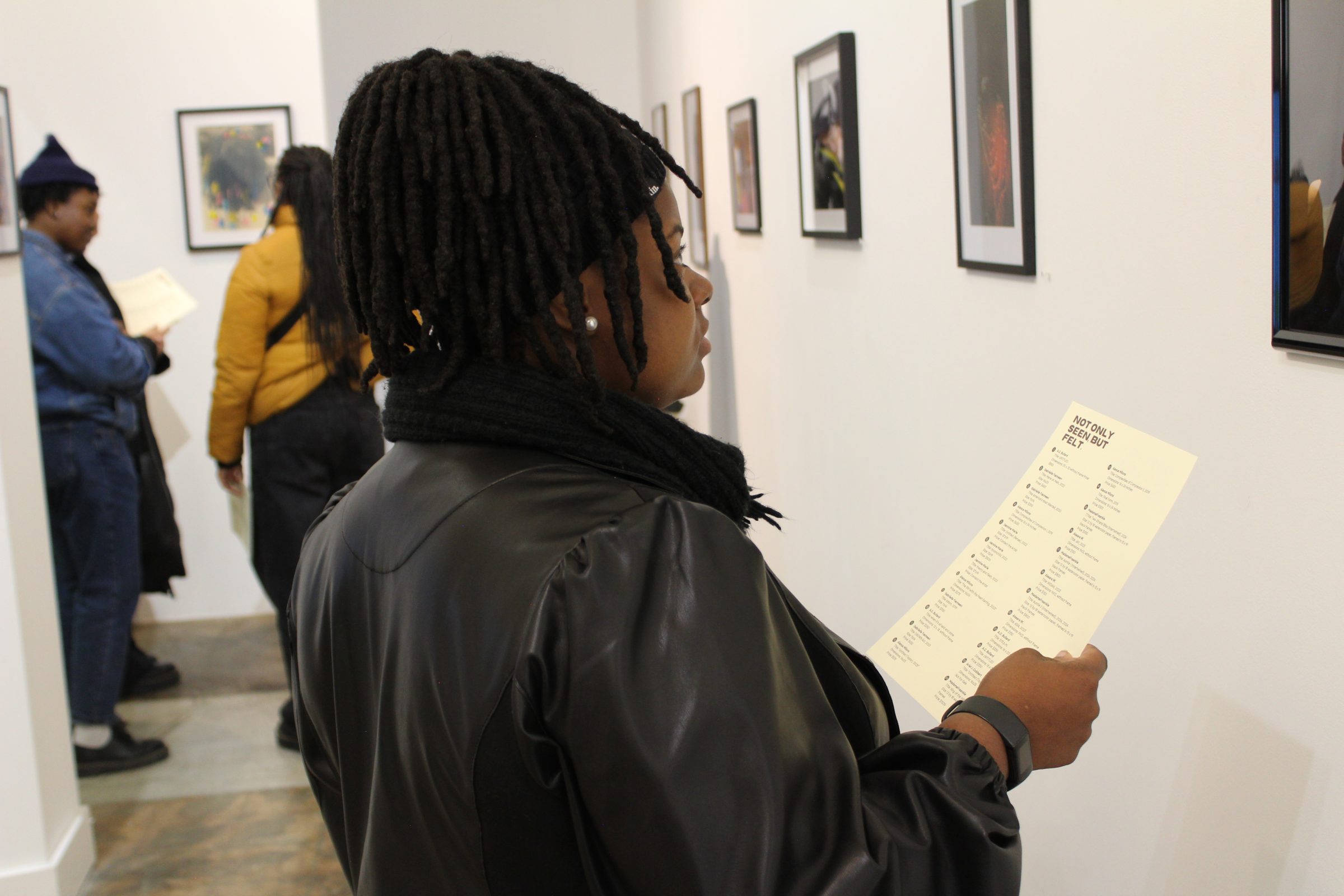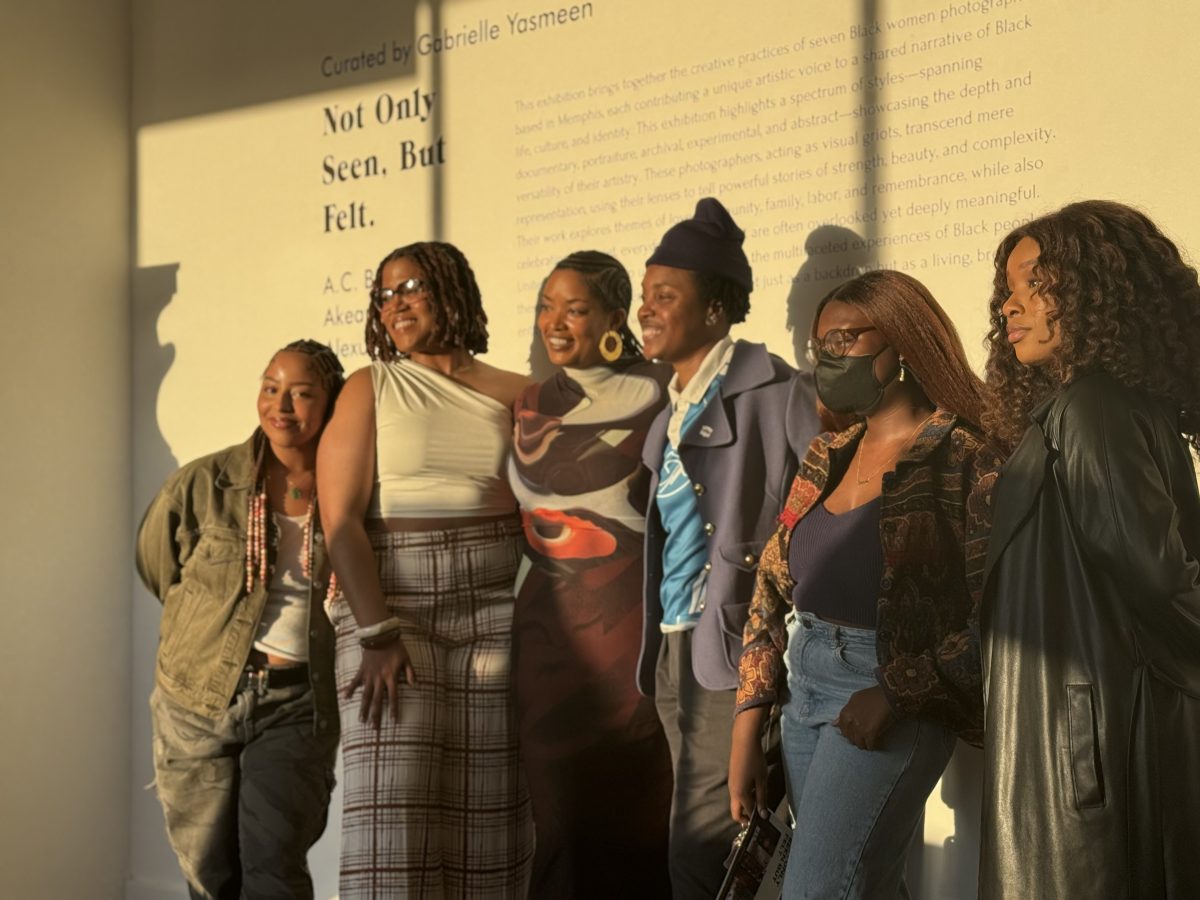Gabrielle Yasmeen began her photography discipline on disposable cameras, taking pictures of her school friends on the bus. She wouldn’t have called it a discipline then. It was about capturing memories. Her family lived outside of Memphis, and this was her way of feeling like she was a part of something, of her friends’ story, of her story.
“It took me a while to call myself a photographer, or an artist actually,” she says, even though she would always have her camera on her, asking her friends to pose this way and that. Over time, though, she began working with clients and taking paid gigs for events. “It really changed my perspective around the importance of what I was doing and the work that I was doing — that people really appreciated it,” she says. “That’s when I was like, maybe, it’s okay to call myself a photographer. Maybe, I can really go for this role that I’m pretending to play.”
Some of this hesitation she attributes to anxiety. “I think I was scared to live up to the photographers that I’ve looked up to, like Carrie Mae Weems and people of that stature. ‘Oh, am I on par with that? Could I ever produce work that felt the way that those images make me feel?’”
Carrie Mae Weems is perhaps best known for The Kitchen Table Series, where the photographer takes center stage at the kitchen table in scenes of mundane life, smoking a cigarette or applying lipstick. These domestic images made Yasmeen “feel like my presence is appreciated, … that I could be displayed in a museum.”
It’s that sense of presence that Yasmeen wants to recapture in the exhibit she’s curated at the Urban Art Commission (UAC): “Not Only Seen, But Felt.” With work by seven Black women photographers, including Yasmeen, the exhibit quilts a narrative of Black life in Memphis, giving rise to each unique voice. “All these pieces, they honor where you’re from, where you’re at, how you show up, and give you a chance to be seen and felt,” Yasmeen says.

“I have not seen in the last five or 10 years a show that was all photography-based and all Black women-based,” she says. “It felt important to me because obviously that’s what I do and that’s who I am in conversation with a lot of times. And us being in Memphis, that’s a majority-Black city, I would think that we’d see more shows kind of dedicated to that. And then just the history of photography here in this city, it’s been something that our ancestors have done, capturing those really historical, sometimes extremely poignant images throughout time, and so I just thought that this might be a space to celebrate some of the higher points.”
The artists featured in this exhibit are A.C. Bullard, Akeara W., Alexus Milons, Ariel J. Cobbert, Jasmine Marie, and MadameFraankie, in addition to Yasmeen. At its core, the show is collaborative. Though Yasmeen is the curator in name and came up with the title, each photographer chose the pieces in their portfolios that they thought best adhered to the theme. “I wanted to do a group show to say that it’s not just about me; it’s about all of us collectively,” she says. “And it feels good to know that you’re not the only one doing this — prioritizing taking images of Black life and celebrating it.”
In all, Yasmeen and her fellow artists have found the exhibit to be inspiring for themselves, even as they strive to inspire others to see and feel for themselves. As Yasmeen says, “To hear their why behind what they do, it has reinvigorated my own search for my why.”
In the gallery, the pieces are arranged in a way so that they are in conversation with one another, rather than grouped by the artist, and the photos range in style, representing each photographer’s individual practice. From a smiling boy flashing cash at a car show to a woman covered in flowers in a studio, these are moments of joy in being seen but also in making one’s presence known, spontaneous and posed. Both are worthy of wall space.

“In today’s time, anyone can take a picture,” Yasmeen says. “But I do think there’s a difference when you set out to deliberately tell a story with your images. That’s what all of the women in this show do: They tell stories with their work and they’re able to tell a full narrative within one image. … And generally speaking about art, there’s the powers-that-be that set the tone of what is and what isn’t art. In a lot of cases, that has been a white-male dominated space, so it takes us to do something about that and say these things are of value and that they matter.
“I do think that things are changing, but larger narratives show that we are coming up against a front and a battle for that and for the legitimacy of other voices. And so it is very validating to be able to put a show like this together and to have it selected.” As part of a new initiative this year, UAC has offered its Office Exhibition Space for free to local artists, like Yasmeen, who apply to the program. (This does not include any funding, just space, but UAC takes no commission on any sales.)
“It takes a village to see the value in what’s being displayed,” Yasmeen says. “Photography is universal, and you can see yourself within any image. And I challenge people to do that, to see the value in the work that’s being displayed.”
“Not Only Seen, But Felt” closes today, Thursday, April 17th, with a reception from 5:30 to 7 p.m. at the Urban Art Commission.
